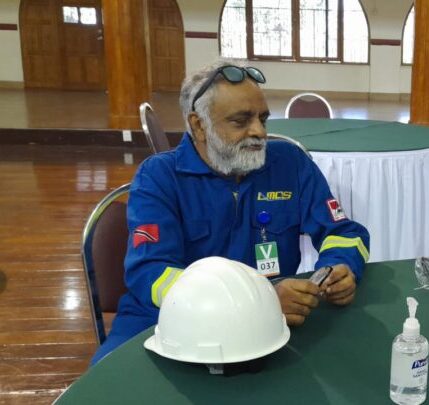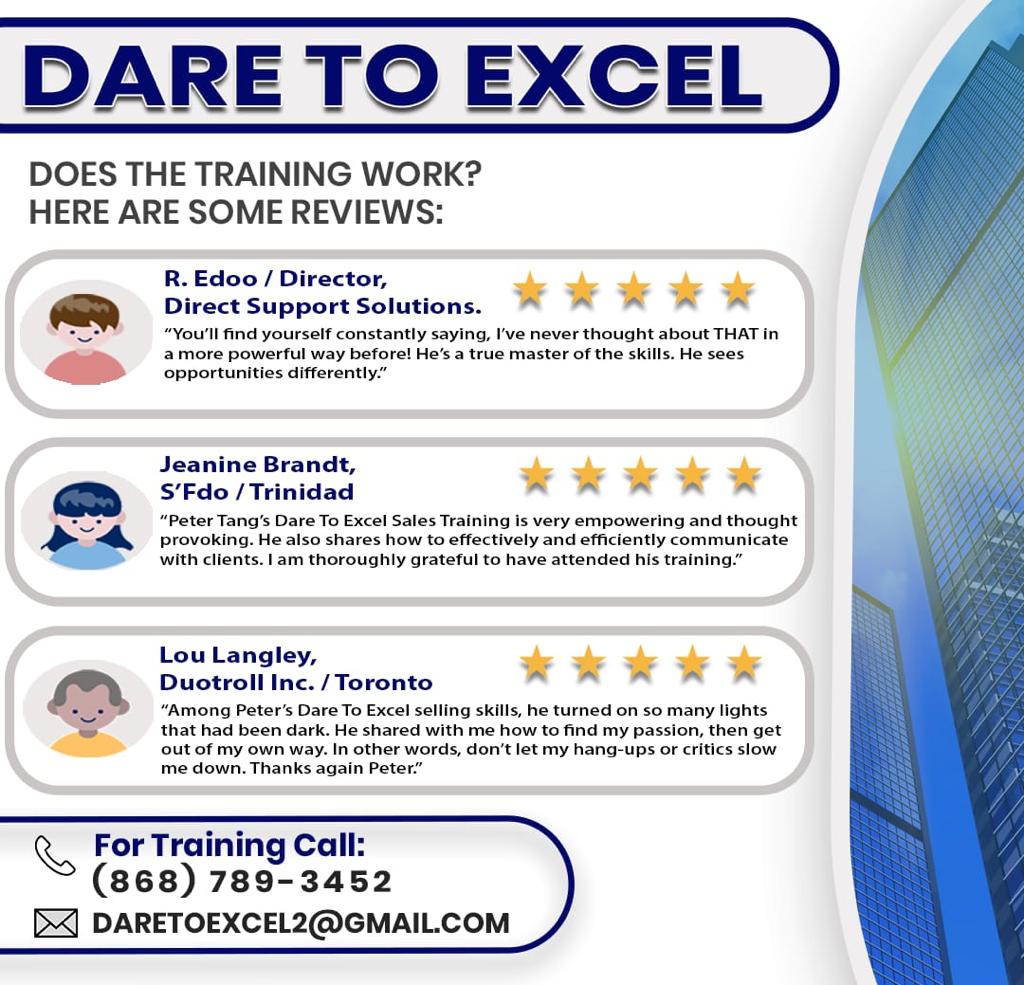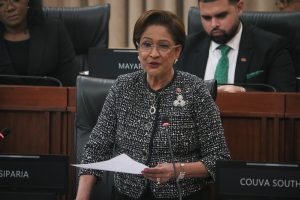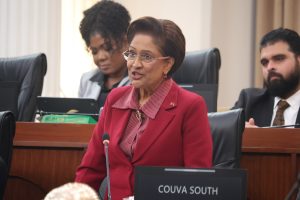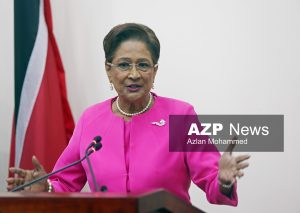By Sue-Ann Wayow
THE hyperbaric chamber in which the underwater divers who died last year February took their last breath of fresh air has been lifted from the seabed.
It was lifted on February 11, just before the one-year anniversary of the accident at Paria Fuel Trading Company Ltd facilities that claimed the lives of Fyzal Kurban, Rishi Nagassar, Kazim Ali Jr and Yusuf Henry on February 25, 2022.
The men, all employed with Land and Marine Contracting Services (LMCS) were working in the hyperbaric chamber referred to as the habitat before they were sucked into a 30-inch pipeline at Berth 6 just off Pointe-a-Pierre due to a differential in pressure (Delta-P).
On Wednesday, Chairman of the Commission of Enquiry (CoE) into the circumstances surrounding the deaths Jerome Lynch and Commissioner Gregory Wilson visited Paria’s compound at Pointe-a-Pierre to view the chamber.
Accompanying the commissioners were legal counsel, LMCS owner Kazim Ali Sr and his legal team, Paria officials and members of the media.
This is the second time Lynch and his team would be visiting Paria as last November, the CoE visited Paria’s facilities.
The media were not allowed to take any photos or videos at the chamber’s site.
The steel chamber rusted and now covered in barnacles with a few mussels, lay horizontal on the compound cordoned off with caution tape.
Lynch allowed Ali Sr and his legal team to view the chamber before others.

Paria had agreed with LMCS’ authorisation to assist in bringing the chamber to shore to accommodate the Commission’s viewing of what Lynch described as an important piece of evidence.
The hyperbaric chamber belongs to LMCS.
The media were told that the chamber’s diameter was 50 inches as it needed to be larger to accommodate the 30-inch pipeline.
Lynch told the media that according to his information, the chamber fell from a crane while it was being removed last February and remained on the seabed about 60 feet down since.
It was Ali’s first time viewing the chamber since it was last used adding that it was not easy for him to view the fated equipment.
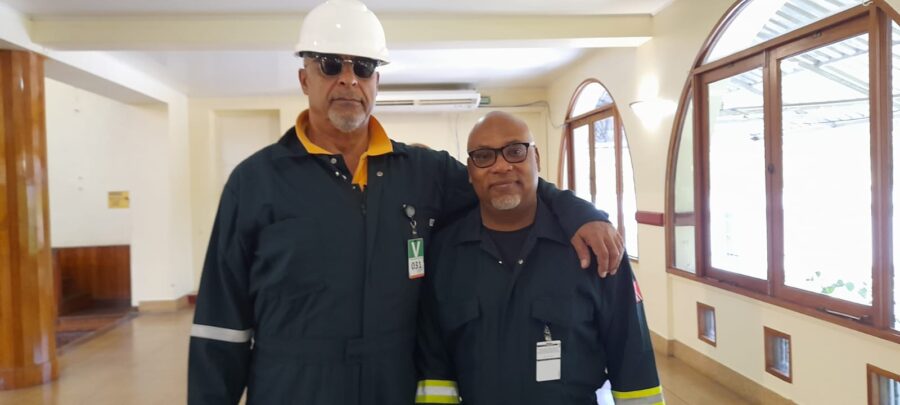
He said that OTSL Ltd was hired to lift it out of the waters using a barge and divers and it was first transported to Chaguaramas as it could not be transported to Paria’s compound by vessel.
The chamber he said when fully outfitted weighed 13 tonnes.
It was then trucked back to Paria’s facilities.
“That was the only way they could have gotten it to shore,” Ali said.
He also told the media that he could not say much on the progress of the CoE until the final report was submitted, admitting that it was hard for him to relive the circumstances after losing his son Kazim Ali Jr in the accident.

Other LMCS equipment still at Paria’s facilities have been ordered to remain there until the completion of the CoE.
Ali said, “We are not allowed to remove it. We were told until the Commission finishes. We have tried a few times to get stuff out but we were advised we could not.”
LMCS, an experienced sub contractor with Paria has been prohibited by the Occupational Safety and Health Agency (OSHA) from conducting works again, until the CoE is completed.
Ali explained that the prohibition was only for subsea work, not for other types of work.
But his company was currently not working on any other job.
However, he did say, “If we are offered work we will take it.”
Ali who teared up while talking to the media said, “The families of the divers are hoping that there is peace after this. Of course I am one of those families.”
Last piece of CoE’s evidence to be viewed
Lynch thanked both Paria and LMCS for facilitating the recovery of the chamber adding that it was not an easy job to do.
He said, “It was useful to see the conditions under which these men were working…It was a very small space for these particular men to be working in. You probably had about three or four men working at the same time. I think it allows me to get some sense of scale of what it is that was being required in that confined space …In that small space, once the differential was created then everybody was being dragged into the pipe including everything that was inside that chamber.”
With the live evidential hearings concluded, Lynch said it was the last bit of evidence to view.
“It was important exercise for us to be able examine that space that was their last breath of fresh air,” he said.
Slight delay in submission of final report
Lynch who had considered having an additional day open for any further questionings or queries said that would not be necessary and the next stage of the CoE would be the handing in of the report which he has already began writing.
He said, “I have reviewed that which we have heard so far and have not called for that day. I don’t think it is necessary, I have considered whether or not we should have legal arguments in relation to the one issue that was remaining at the conclusion of the enquiry live sessions and that was to do with whether there is any separate legal liability that might arise from a failure to rescue and I have received substantial submissions made from various parties.”
He admitted that writing the report first in draft version would be time-consuming.
“It is going to take a little while. It is a vast body of evidence, of course, a great deal more than what the public has seen by way of live evidence. We have literally tens of thousands of pages to sift through to take into account in the process of drafting this report,” Lynch said.
There may be a slippage of time in terms of a week or two from the end of April deadline but the CoE chair is hoping that would not be the case.
On a personal note, he added that the entire process was a rewarding experience for him because of the amount of cooperation received from attorneys, his advisory legal team led by Ramesh Lawrence Maharaj, SC and the general public.
![]()


